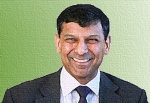Budget 2015: An exercise that is neither prudent nor populist
Anoop Swarup
This was widely hailed as the budget of hopes that would usher in big bang reforms. Yes the budget has come and gone. Indeed there was an opportunity for the Modi government as he had enormous bounty by way of the crude oil windfall coupled with a favourable climate both in terms of the fiscal and the political scenario. The nation had given Prime Minister Modi the mandate and the common man as also the business world were both pinning all their hopes on a new found exuberance for ‘acchey din’ (Pm’s much hyped slogan of good days). In retrospect having intimately been associated with the budgetary exercise almost a decade ago in North Block, I may say now after the budget speech is over that it was an unimaginative budget aptly characterised as a ‘series of deferred promises’. Neither populist nor prudent enough for the 700 million of our fellow country men who’s daily livelihood is at stake. The story is the same on the job creation front with 13 million youngsters entering our work force every year. Not really, and therefore not surprisingly, the markets reacted – first with hope and then with dispair and disappointment.
Let me explain, on the macroeconomic front Finance Minister Arun Jaitley has stretched the fiscal consolidation roadmap by 0.3 percentage, thus the year wise fiscal deficit targets are 4.1 per cent for FY15, 3.9 per cent for FY16, 3.3 per cent for FY17 and 3 per cent for FY18, each year missing 30 bps. The quality of fiscal deficit is measured by the ratio of revenue deficit-to-fiscal deficit and it should be noted that a majority of the major international rating agencies have been warning the country about the high fiscal deficit in the past. In the run-up to the Budget, S&P and Moody’s had even said the high fiscal deficit was among the factors that constrains the country’s rating and consequential inflows and investments.
Yes the country needs public expenditure for building the economy not through wasteful non-plan expenditure but as plan expenditure and the fine print has a story to tell as the total additional public investment over and above the revenue estimates is planned to be Rs 1.25 trillion out of which only Rs 70,000 crore would be capital expenditure from budgetary outlays. Similarly the additional legroom created due to crude oil bonanza should have been used for job creation to reap the demographic dividend through capital expenditure and nation building and notfor embarking on a experimental financial devolution to the States. Surprisingly the plan reduction is probably because of devolution to the States, the General Anti-Avoidance Rule (GAAR), a perfect tool against tax evasion, stands deferred by 2 yrs, the anticipated reforms in the EPF were not there, remaining of coal auctions are not yet taken up, the ATF hike of 8% may have inflationary repercussions. The Rail Budget ushered in a better reforms agenda but the contribution of Railways to the national GDP of just 2 per cent could have been doubled with better, higher and more aggressive growth trajectory through the induction of the ambitious bullet trains and more metros. Let us also not loose sight of the fact that our “I ways” are as important as “Highways” and the right boost to the IT sector could have been creatively managed so as to give the country an edge in the hot flat and crowded world that we have.
In the absence of adequate mechanism and safeguards against mis-governance in the States there may be apprehensions on the devolution of more finance to the States now proposed to be nearly 62 percent over the earlier 45 percent though an exercise that could have been best left to the Finance Commission that meets every 5 years, now the 14th. This announcement by Arun Jaitley perhaps in his overzealousness to please Narendra Modi who had to keep up the electoral assertion for greater revenue allocation to the States, though with the best intentions, will have adverse fallouts if it is not equitable and properly planned by the States that have no great past record of financial governance and accountability.
On the Monetary Policy front, substance misses out from the real objective of countering inflation and ensuring price stability as the Monetary Policy Framework and the Monetary Policy Committee announced as a copy cat to the US Federal Reserve and the British example that makes the RBI formally responsible and accountable for price stability and maintaining growth. In order to achieve the set 2-6% inflationary target the repo rate remains the key tool with the RBI Governor Raghuram Rajan’s statememnt today on Monetary Policy and the decision to reduce the policy repo rate under the liquidity adjustment facility (LAF) by 25 basis points from 7.75 per cent to 7.5 per cent with immediate effect and in the process the reverse repo rate under the liquidity adjustment facility (LAF) now stands adjusted to 6.5 per cent. The latest rate cut is obviously to contain outside debt with foreign governments embarking on a rate cut spree to combat recessionary risks. It appears to be a confused document that sets in motion the hazards before the nation of a blame game between fiscal prudence of the government and the monetary limitations of the Reserve Bank as each is responsible in no less a measure for debt management and inflationary checks with no control on acts of gods such as flood and famine as also the international crude oil pricing that have a strong bearing on supply side factors such as fuel and food. Even the RBI Governor has underscroed this in his latest monetary polic statment by stating: “Food prices will be affected by the seasonal upturn that typically occurs ahead of the south-west monsoon and, therefore, steps the government takes on food management will be critical in determining the inflation outlook. Finally, the possible spill over of volatility from international financial markets through exchange rate and asset prices channels is also still a significant risk.”
On the fiscal prudence front there is much left to be desired in the latest Budget proposals as a hike in service tax rates to 14 percent though not populist, ostensibly to bring the same in line with the proposed GST roll out has a potential inflationary fallout and the burden particularly will be on the middle and lower income groups. The roll out on GST being deferred to April 2016 raises question marks on the urgency for such a hike. Not raising of the much anticipated personal income tax slabs that could have given a boost to public spending and consumption in a recessionary economy for better demand appears as a big disappointment to the honest service class in our country that form the bulk of the 3.5 million middle class tax payers.
For the Stock Markets there appears to be some imprudence as the extra 2 per cent surcharge on dividend distribution will have a negative impact on investor sentiments as the corporates may rebalance dividend payouts downwards to compensate. The threshold for Transfer Pricing has been raised to 200 million rupees from the current 50 million deferred much to the delight of the Corporate world. The abolition of wealth tax does appear to be a sop for the wealthy but a welcome step as it was more evaded than aided in the past. Similarly, a hike in surcharge on high incomes can only be seen as a mere revenue mopping measure to the tune of 9000 crores but the tax burden may dampen the spirits of India Inc. The promises do include a commitment to reduce corporate tax rates over the next four years, while plugging exemptions. The government also seeks to remove the distinction between foreign direct investment and foreign portfolio investment through the introduction of the Corporate Investment Fund that might have a beneficial effect in certain sectors, especially the private banks that are now poised to play a more important role.
The Direct Tax Code as also Indirect Tax Code is yet to see the light of the day and the much needed simplicity and brevity in tax collection process is once again on the back burner for the next year. Though Jaitley did mention low cost and high yield tax and merger of education cess for ease of computation, it may be hoped that the much needed education and skilling agenda of yesteryears is not lost sight of. On the health front, higher tax exemption of 25000 rupees and the social safety net and the facility of pension to individuals, an additional deduction of Rs 50,000 proposed for contribution to the New Pension Scheme under Section 80CCD was a welcome measure.Also on the positive side there is some conscious effort in the budget to encourage manufacture and reduce raw material cost as Customs and Excise duties have been lowered on many intermediate goods. Customs duties have been cut on metal parts, insulated wires, refrigerators’ compressor parts, catalytic converter compounds, sulphuric acid. Among sophisticated electronic equipment, duties on video cameras, endoscopes, optic fibre and LED/LCD panels have been reduced and tablet computers will also be cheaper. There appears to be some protection for domestic iron & steel manufacturers with customs duties being hiked on imports of iron and steel to protect domestic industries. Imported trucks and buses will also become more expensive, which will mean a boost to domestic commercial vehicle sales.
India’s share of global manufacturing at only .9 % compared to China’s 3.1 % and US 25% could have been rectified for the ‘Make in India’ and the ‘Made in India’ campaigns through a more aggressive boost for investments in Skilling and Education at the school and primary level for the demographic dividend that we already have to be capitalised. The additional depreciation at 20 per cent allowed for plant and machinery installed at manufacturing units, or power generating units will encourage investments. Also the spending on infrastructure to be hiked to 70,000 crore in 2015-16 is a positive sign as is the proposed tax-exemptions for investments in infrastructure bonds to rope in household savings. The government will have to demonstrate its ability to get projects moving through land and labour reforms and a bigger bottleneck perceived is actual implementation through good governance and not mere paucity of funds. Besides, the allocations for building roads and bridges, though significantly enhanced to boost the capacity of construction companies and the road developers, critical reforms are also needed in the PPP framework to ensure better accountability and on time targets. The power sector gains with a commitment to setup five new “plug-and-play” Ultra Mega Power Projects but the Investors have to be taken into confidence for actual clearance and linkages to come through in the plug and play model. It may be counter-productive at this stage to have doubled the “green” cess on coal as it means higher thermal tariffs that will be passed on to the consumers though it will encourage growth in terms of renewable energy. Again a prudent measure for ‘Swach Bharat’ as effluent and waste-water treatment plants get a break from service tax and a boost to profitability for private players.
Finally, a law on black money may be in the offing with heavy penalties and no settlement as also restrictions on Benami property and achieving a cashless society through reduction in cash transactions and the Rupaya Debit Card. India has overtaken China with an insatiable appetite for the yellow metal as it presently imports over 100 tons of gold annually and has over 20000 tons in existing stocks. The monetisation of gold through the Sovereign Gold Bonds and the Indian Gold Coins would be a welcome step as it brings an hitherto un-utilised economic asset in the national mainstream.
On balance, though apparently a pragmatic Budget, it is neither populist nor prudent. On its own it may not help to accelerate growth in absence of concomitant reforms in the environmental laws, land acquisition laws, labour laws and the housing and infra sector. We need a committed bureaucracy and a political leadership that has to demonstrate a investment friendly approach as also stable and predictable policy and taxes, ease of doing business, element of certainty, tax clarity for REITS, Transfer pricing, Tax Administration Reform Commission (TARC) and Shome Committee recommendations to be implemented in both letter and spirit. More importantly job creation through the revival of growth appears more in letter than in real spirit in the financial statement of the year. The five challenges addressed by the Finance Minister in his budget speech that include impetus for agricultural under stress and manufacturing growth down to 17 percent, fiscal discipline and infrastructural infusion through cooperative federalism by devolution to the States do remain abstract and elusive.
No wonder the Budget was not the big bang that the country expected considering the optimism of a brand new government and the opportune time. For the common man the certainty of death and taxes remains as true and as omnipresent as ever.



No comments:
Post a Comment